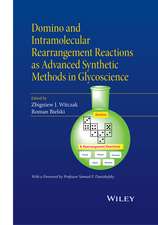Liquid Glass Transition: A Unified Theory From the Two Band Model
Autor Toyoyuki Kitamuraen Limba Engleză Paperback – 3 dec 2012
- Examines key theoretical problems of the liquid-glass transition and related phenomena
- Clarifies the mechanism and the framework of the liquid-glass transition
Preț: 608.74 lei
Preț vechi: 668.94 lei
-9% Nou
Puncte Express: 913
Preț estimativ în valută:
116.52€ • 126.61$ • 97.94£
116.52€ • 126.61$ • 97.94£
Carte tipărită la comandă
Livrare economică 14-28 aprilie
Preluare comenzi: 021 569.72.76
Specificații
ISBN-13: 9780323282932
ISBN-10: 0323282938
Pagini: 402
Dimensiuni: 152 x 229 x 21 mm
Greutate: 0.54 kg
Editura: ELSEVIER SCIENCE
ISBN-10: 0323282938
Pagini: 402
Dimensiuni: 152 x 229 x 21 mm
Greutate: 0.54 kg
Editura: ELSEVIER SCIENCE
Public țintă
Researchers, advanced students and professionals in physics, chemical engineering, mechanical engineering, materials science, and applied mathematics.Cuprins
1.Introduction2.Sound and Elastic Waves in the Classical Theory3.Fundamentals of Quantum Field Theory4.Temperature Green’s Functions5.Real Time Green’s Functions and Temperature Green’s Functions6.The Structure of Glasses Associated with Phonons7.The Liquid-Glass Transition8.Phonon Operators in Nonlinear Interaction Potentials9.Phonon and Sound Fluctuation Modes and Thermal Conductivities10.The Liquid-Glass Transition in Multi-Component Liquids11.Extension of the Two Band Model




